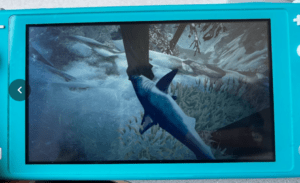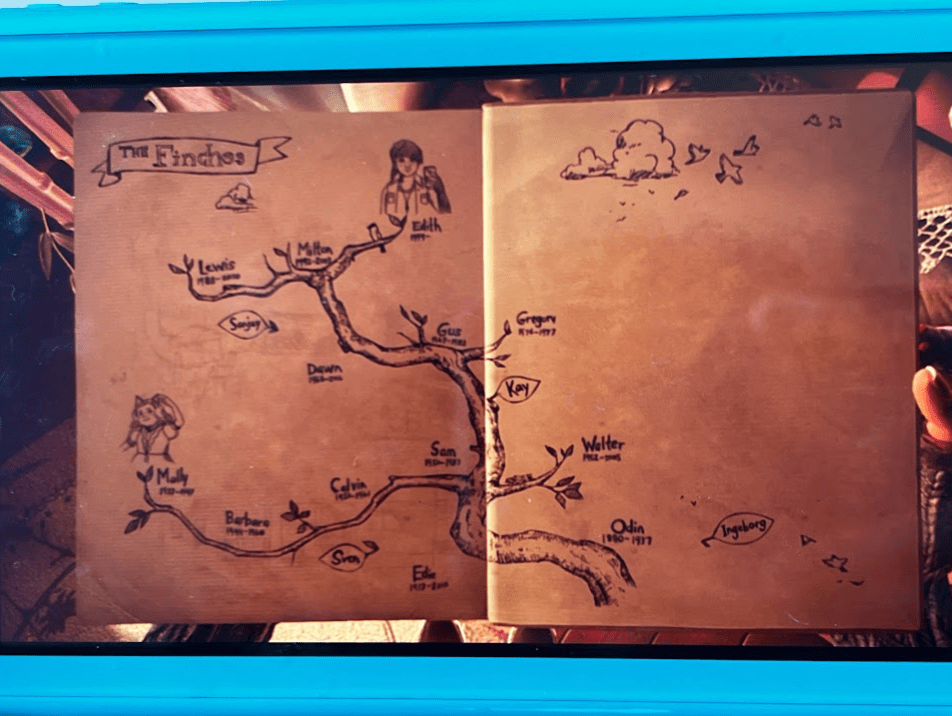For this critical play, I played What Remains of Edith Finch, a walking simulator created by Giant Sparrow which is available on PC, Xbox, Nintendo Switch, iOS, and PlayStation. This game is marketed toward gamers interested in narrative experiences and walking simulator enthusiasts and I played it on my Switch.
In What Remains of Edith Finch, walking isn’t just a means of traversal; it’s the medium through which the narrative is told. The game demonstrates that walking, in the context of walking simulators, serves as a powerful storytelling tool that allows players to immerse themselves in the world and uncover its secrets at their own pace. The game uses pacing, environmental storytelling, and the player’s physical exploration to craft an emotional and captivating narrative experience.

What Remains of Edith Finch masterfully utilizes walking to convey its entire narrative. The player takes on the role of Edith Finch as she returns to her family home, uncovering the stories of her relatives through exploration. Each room holds clues to the lives and deaths of the Finch family members, and it’s only by walking, observing, and interacting with objects that players can piece together the history of the family.

One of the most striking aspects of the game is its environmental storytelling. Each room in the Finch house is designed to reflect the personality and story of its inhabitants. For example, Barbara’s room, as a child actress, is adorned with posters and memorabilia from her career, offering insight into her aspirations and struggles. The player’s exploration of these spaces isn’t just about moving from point A to point B; it’s about uncovering layers of narrative depth through exploration.
Moreover, the game’s pacing is crucial to its storytelling. Walking allows for moments of quiet reflection, offset by intense emotion as players delve deeper into the family’s history. By allowing players to control the pace of their exploration, What Remains of Edith Finch creates a sense of intimacy with the story, drawing them further into the lives of the characters. For example, on the road to get to the Finch’s house, there is a fork where players can choose one side to traverse or go on both paths to get to the house. I chose the path down into the forest, but having the option to choose a path and being able to interact more with the story and the environment helped my engagement with the story.
While some may argue that the lack of traditional gameplay mechanics detracts from the experience, I would argue that the simplicity of walking enhances the game’s narrative impact. By stripping away complex gameplay elements, the focus remains squarely on the story and the emotional journey of the player.
Comparing What Remains of Edith Finch to other walking simulators, it stands out for its unique approach to storytelling. While other walking simulators like Gone Home and Firewatch also prioritize exploration and narrative, What Remains of Edith Finch distinguishes itself through its surreal and imaginative storytelling techniques.

Playing as a cat, then an owl, then a shark in Molly’s story, it is still a walking simulator; however, mixing these unique experiences with Edith’s human story sets this game apart. From the fantastical recounting of family members’ deaths to the use of various gameplay mechanics to convey their stories, the game pushes the boundaries of the genre.
What Remains of Edith Finch highlights the importance of harmony between mechanics and narrative in walking simulators. While traditional games often rely on gameplay mechanics to drive the experience, walking sims demonstrate that movement itself can be a powerful mechanic for storytelling. As for the formal elements of the game, the core aesthetics of clutter and darkness add to the intrigue of the game and give the impression that there is more story to find out about. Furthermore, the game exemplifies the importance of environmental storytelling and player agency in narrative-driven experiences. By allowing players to explore the world at their own pace, What Remains of Edith Finch gives them a sense of ownership over the story, fostering a deeper emotional connection.

In conclusion, What Remains of Edith Finch showcases the storytelling potential of walking simulators. By leveraging movement as a narrative tool, the game creates an immersive and emotionally resonant experience for players. Through careful observation, environmental storytelling, and player agency, What Remains of Edith Finch demonstrates that sometimes, the simple act of walking can tell the most compelling stories.




